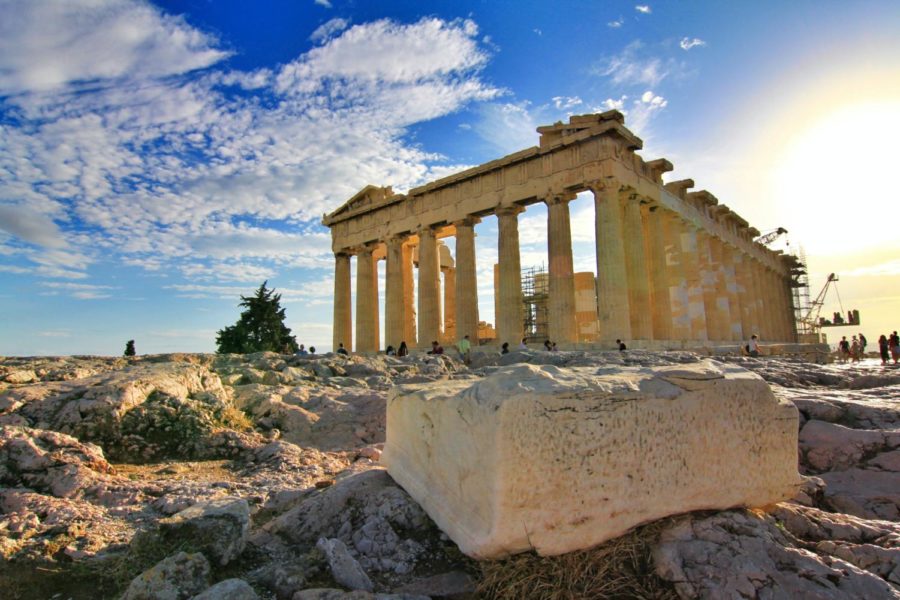Shiralkar: Plato’s rave
November 8, 2020
Plato’s (427-347 B.C.) potential political career came to an abrupt halt when his mentor, Socrates, was tried and executed in 399 B.C. Opening a school — the first of its kind — near Athens, Plato spent several years teaching and writing at the Academy.
He wrote in Socratic dialogues, wherein the plight of the human condition is discussed. This discourse makes up part of a conversation in which Socrates is usually the primary speaker. In “Allegory of the Cave,” Plato attempts to dissect the acquisition of knowledge.
How do people come to know things? What is aesthetically pleasing? What is good or just? In Book VII of the Republic, Socrates is speaking to Glaucon, one of his disciples. He asks Glaucon to imagine an underground cave, with the only entrance at the very top of a steep climb.
Inside the cave there are people, prisoners chained such that they can only see the back wall of the cave. Unable to move their heads in any direction, the prisoners are forced to look at the shadows playing on the back wall, aided by a light source directly behind the prisoners.
According to what “Allegory” is trying to convey, the prisoners are able to see only shadows of things moving around, and any conversations are muffled by echoes. Their perception of reality, thus, is shaped by their restricted, scarce interactions with their surroundings, mainly by sight.
If, then, a prisoner were to escape and examine his surroundings, he would find it difficult to comprehend the existence of actual objects and individuals in the cave, not just shadows. Then, the prisoner shall make the climb up and out of the cave to witness the sun, the moon, nature, reality — everything that he had no idea existed before then.
The metaphor suggests the prisoners are us, humanity, bound by the shackles of our own ignorance. For the prisoners who escape, scholars and philosophers who seek out enlightenment, it is a moral duty to return to the cave and help their fellow prisoners see the light.
Without this, the prisoners will remain blissfully ignorant in the dark, much like students on the bar dance floors in Ames. It seems a bit of a reach to juxtapose the two concepts, but it’s a fun reach. Students still going to the bars seem unable to look beyond their bubble, stuck in boundless reveling of their indifference to reality.
Much inspired by the public condemnation of Socrates for trying to bring the truth to light, the allegorical scholars who go back to the cave are shunned by their erstwhile underground companions. In the world of the ravers, similarly, protesting the very notion of a party is seen as ignorant and worthy of social criticism.
Challenging the status quo of the illusion of “the normal” is uncomfortable. That is the message of Plato’s “Allegory of the Cave.” And its farfetched relation to the bars in the fall of 2020 is amusing because it checks out. Wash your hands and wear a mask.







